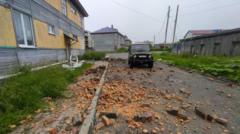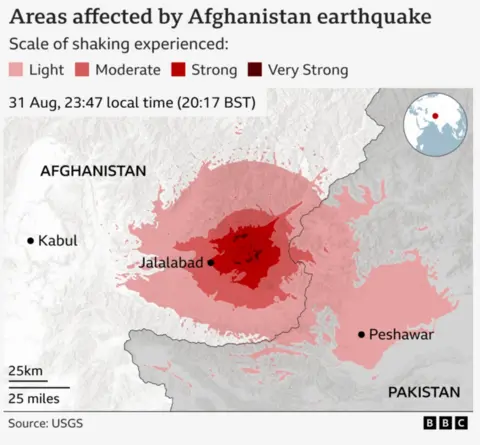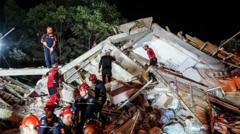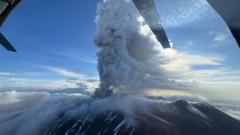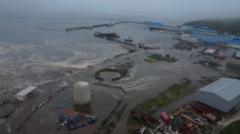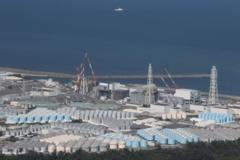The Kamchatka Peninsula in eastern Russia experienced a significant 8.8-magnitude earthquake recently, raising alarm for potentially catastrophic tsunamis reminiscent of past disasters. Fortunately, the event, which occurred at 11:25 local time, did not trigger the extensive tsunami feared by millions across the Pacific coast.
Historically, seismic activity in this region falls within the so-called "Pacific Ring of Fire," which is notorious for numerous earthquakes and volcanic eruptions due to tectonic plate interactions. The Pacific plate moves north-west at a rate of roughly 8cm (about 3 inches) annually and interacts with the smaller Okhotsk microplate, creating conditions ripe for megathrust earthquakes. Dr. Stephen Hicks of University College London notes that the vast rupture area during such quakes generates their massive magnitudes.
In this instance, tsunami waves reached about 4 meters (approximately 13 feet) high in parts of eastern Russia, which, while significant, are dwarfed compared to those spawned by previous major earthquakes, such as the colossal waves seen in the Indian Ocean in 2004 or Japan in 2011. Various influences, including the nature of the seafloor and the local topography, play pivotal roles in determining tsunami severity.
Additionally, the earthquake's depth, measured at around 20.7 km (12.9 miles) below the Earth's surface, may also have contributed to the subdued tsunami waves. Dr. Hicks suggests that this depth might have led to a conservative modeling of the tsunami's potential.
Another critical factor aiding in mitigating the disaster was the establishment of early warning systems across many Pacific nations. Warnings prompted evacuations, particularly in Japan, where approximately 1.9 million residents were advised to seek higher ground. These systems, non-existent in 2004, now play an essential role in averting loss of life, permitting timely action in uncertain situations.
Despite this recent quake's diminished tsunami impact, continuous monitoring by the Geophysical Survey of the Russian Academy of Sciences is crucial, as further aftershocks can persist for several weeks. As scientists continue to probe the complexities of tectonic movements, they remain vigilant about the possibility of future seismic events in this volatile region, with community safety remaining a paramount concern.
Historically, seismic activity in this region falls within the so-called "Pacific Ring of Fire," which is notorious for numerous earthquakes and volcanic eruptions due to tectonic plate interactions. The Pacific plate moves north-west at a rate of roughly 8cm (about 3 inches) annually and interacts with the smaller Okhotsk microplate, creating conditions ripe for megathrust earthquakes. Dr. Stephen Hicks of University College London notes that the vast rupture area during such quakes generates their massive magnitudes.
In this instance, tsunami waves reached about 4 meters (approximately 13 feet) high in parts of eastern Russia, which, while significant, are dwarfed compared to those spawned by previous major earthquakes, such as the colossal waves seen in the Indian Ocean in 2004 or Japan in 2011. Various influences, including the nature of the seafloor and the local topography, play pivotal roles in determining tsunami severity.
Additionally, the earthquake's depth, measured at around 20.7 km (12.9 miles) below the Earth's surface, may also have contributed to the subdued tsunami waves. Dr. Hicks suggests that this depth might have led to a conservative modeling of the tsunami's potential.
Another critical factor aiding in mitigating the disaster was the establishment of early warning systems across many Pacific nations. Warnings prompted evacuations, particularly in Japan, where approximately 1.9 million residents were advised to seek higher ground. These systems, non-existent in 2004, now play an essential role in averting loss of life, permitting timely action in uncertain situations.
Despite this recent quake's diminished tsunami impact, continuous monitoring by the Geophysical Survey of the Russian Academy of Sciences is crucial, as further aftershocks can persist for several weeks. As scientists continue to probe the complexities of tectonic movements, they remain vigilant about the possibility of future seismic events in this volatile region, with community safety remaining a paramount concern.

